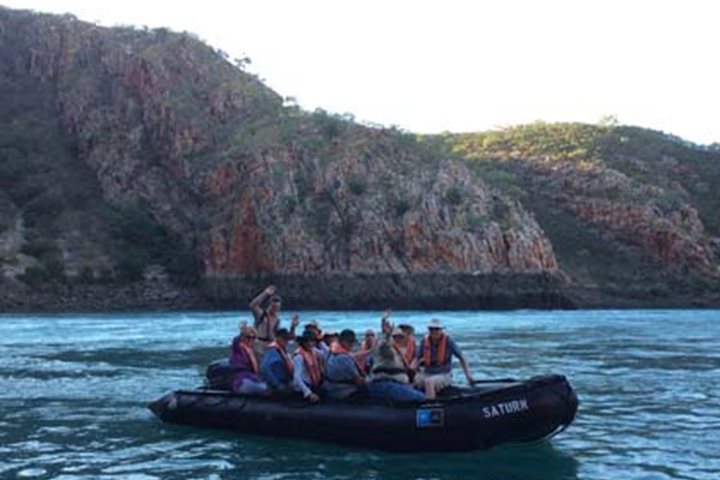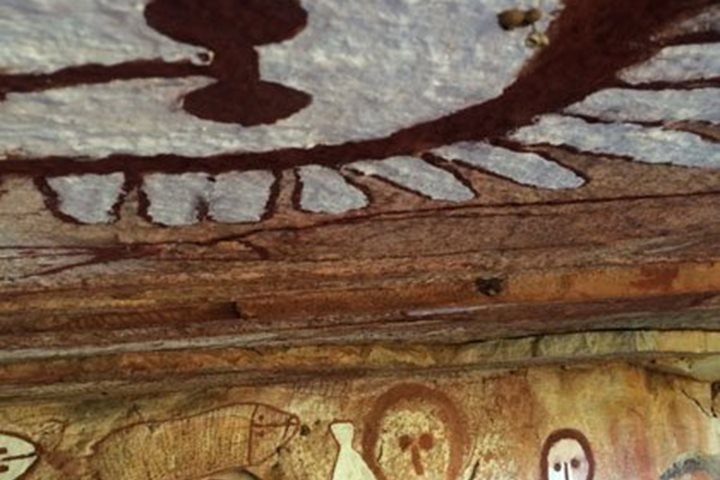Skimming across crystal clear waters this morning we arrived at Jar Island to view the ancient Gwion Gwion aboriginal art. Discovered by pastoralist Joseph Bradshaw in 1891, the rock images are intricate depictions of human and animal figures. The use of hematite in the paintings has led to the art being embedded and stained into the porous sandstone, further enabling its preservation. As the rock art itself cannot be dated directly, the age of attached wasp nests are measured using optically stimulated luminescence dating. In some cases the art has been dated as far back as 17,000 years ago.
Today’s aboriginal people no longer traditionally paint Gwion Gwion art or associate it with their culture. This has led to theories that the art possibly originated from a past race of people who may have come from other lands, such as the Makassars from Indonesia or even seafarers from Madagascar. This provided much food for thought and discussion over lunch. The mystery and debate continues.
After repositioning the ship eastwards to Vansittart Bay, we trekked across an open saltpan and into the nearby eucalyptus scrub to see the remnants of a much younger historical event, a downed C-53 Skytrooper (military equivalent of the Douglas DC-3). On February 25, 1942, the plane was en route to Broome from Perth, but after becoming lost and running low on fuel, it was forced to land. Amazingly, the pilot and all crew not only survived the crash without injury, but also survived five days in the humidity and heat of the Kimberley wet season without a water source before being rescued by Qantas Empire seaplane, the Corinthian. The aircraft has remained fairly intact through wind, rain, salt and fire for the last 73 years.
In addition to a history lesson, there were also expert photo tips being shared for the keen photographers among us during the afternoon photography workshop. Camera shutters fired away at various subjects from fiddler crabs, mudskippers, mangroves, square-tailed kites and, ultimately, at the brilliant reds of a smoke-hazed sunset that topped off another awe-inspiring day in the wilds of the Kimberley.







